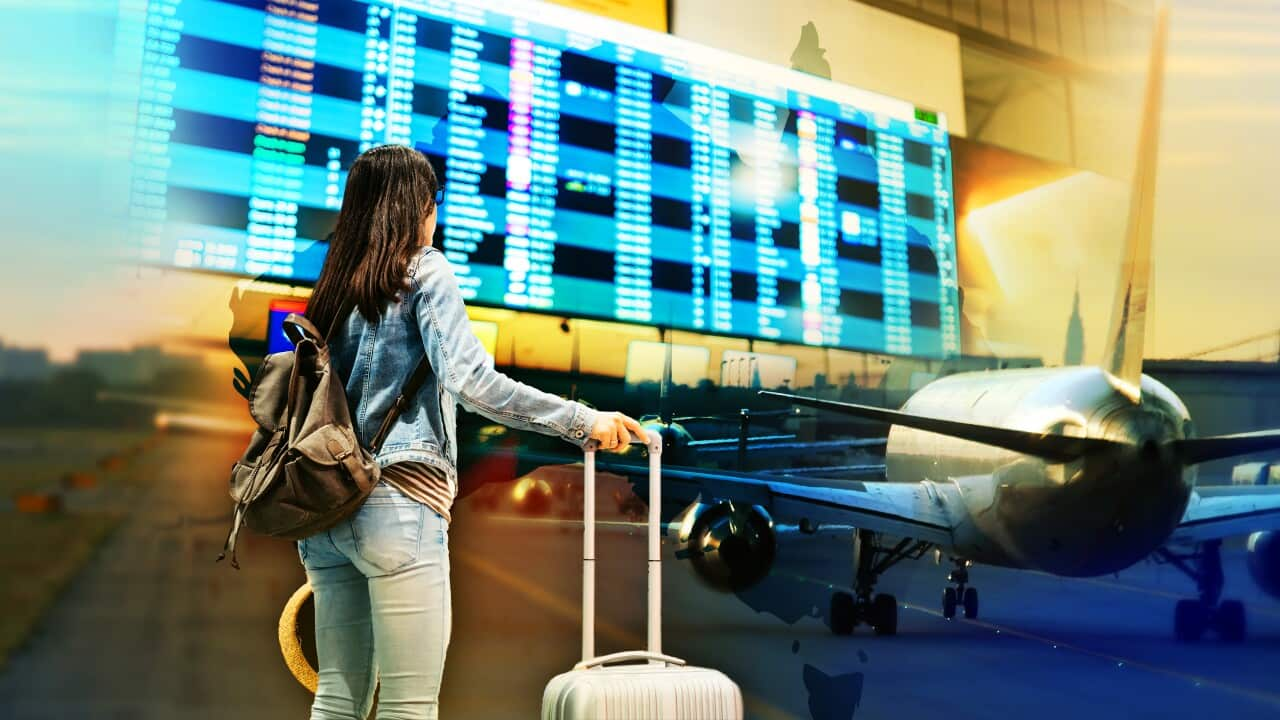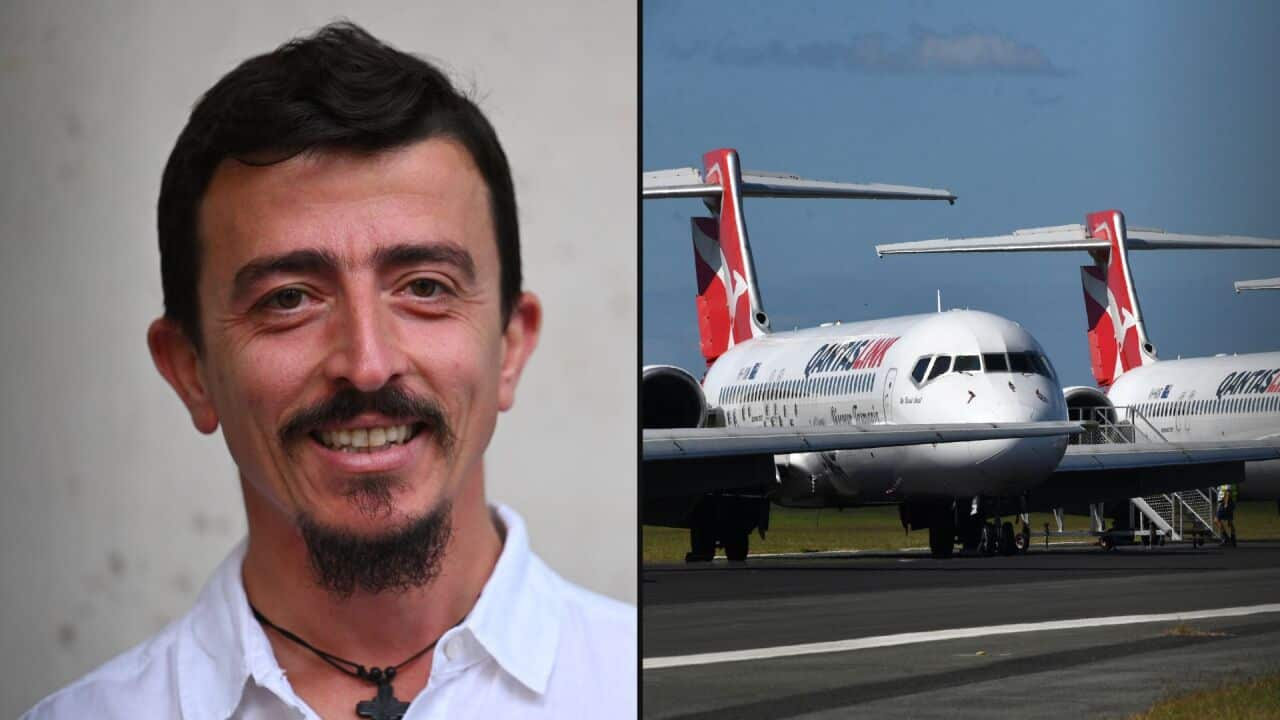Last year, Australia welcomed its first new major airline in more than a decade — Bonza.
It labelled itself the "bogan" airline, with its first three planes named Bazza, Shazza, and Sheila. It would service routes that other budget airlines didn't fly, and its CEO promised to the "bar high on quality, and our costs low".
But it had a and now, just 15 months after its maiden flight, the budget airline on Tuesday after abruptly cancelling flights across the country.

Bonza was forced to cut several routes in July leaving customers in limbo. Source: AAP / Peter Wallace
With 95 per cent of passengers flying with Qantas and Virgin Australia, is there room for new entrants to the nation's airline market?
A historically challenging market
For decades the federal government had a two-airline policy, which created a mandated duopoly between the two major carriers Trans Australia Airlines (later Australian Airlines) and Ansett, which charged the same fares on identical routes.
It was not until October 1990 that then-prime minister Bob Hawke's Labor government deregulated the aviation industry, opening the door to competition.
One month later Australia's first ever low-cost carrier Compass Airlines entered the market, but ran into trouble after just one year, following the major airlines undercutting fares on competing routes.

Tigerair was discontinued in Australia in 2020 Source: AAP
It was later taken over by Virgin Australia, which suspended the airline in March 2020 during COVID-19 travel restrictions.
It's a shorter story for Melbourne-based carrier OzJet, which lasted only four months after its launch in November 2005.
While regional carrier Rex, founded in 2002, continues to offer flights on a number of routes and runs its own flight school, its success is an exception to the rule.
Why do airlines struggle in Australia?
Aviation expert and consultant Bruce Dale said Australia has the potential for new airlines to be commercially successful, but there are challenges for carriers hoping to take off.
"Bonza was offering a genuine point of difference with flights between regional centres not found elsewhere, so hats off to them for trying something new," he told SBS News.
"Where they got in trouble was poor execution, not having enough aircraft certified, and losing consumer confidence."
Tim Collins, the director of aviation consultancy Upstream Aviation, said the sector had always been a numbers game, making it difficult for emerging carriers.
"At the end of the day airlines are a business and it comes down to dollars and cents," he said.
"There is always a risk the major airlines will drop prices and squeeze out any new airlines on fares."
While the future of Bonza is up in the air, other airlines have faced similar challenges in the Australian market.
Is there space for another airline?
Dale said that despite a history of failed airlines, he could see favourable conditions soon for a carrier to challenge Qantas and Virgin Australia.
"Runway capacity is on the rise, with Western Sydney Airport on the way and upgrades in Brisbane and Melbourne," he said.
"More slots for planes mean more opportunities."
But Collins disagrees. He said he does not foresee a new airline being successful.
"The cost of running an aircraft can be anywhere from $12,000 to $15,000 per hour, taking into account fuel, maintenance and staffing," he said.
"The barrier to entry is quite high, I don’t see a new airline as a viable business."

Federal Transport Minister Catherine King. Source: AAP / Lukas Coch
"We are a small market and it is always very difficult for new entrants we've seen that through the process of aviation history here in Australia," she said.
"But we are determined as a government to do everything we can to try and improve competition."
The government has opened a hotline for Bonza passengers stranded across the country on 1800 069 244. It will remain open until 10pm on Tuesday.











